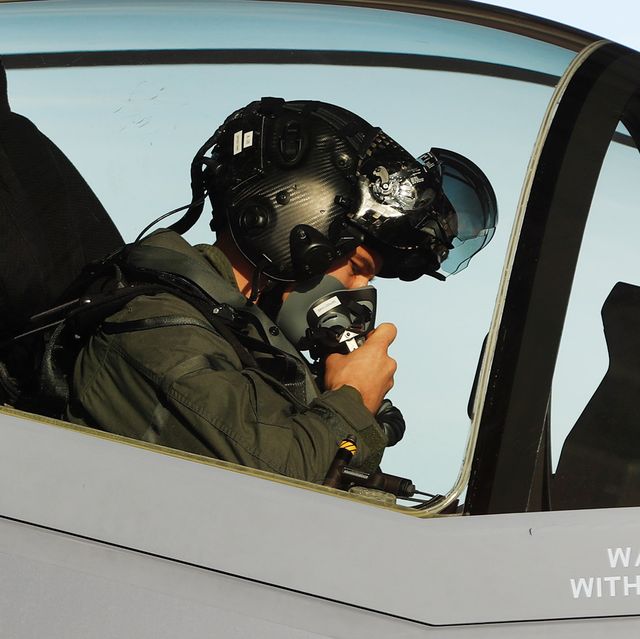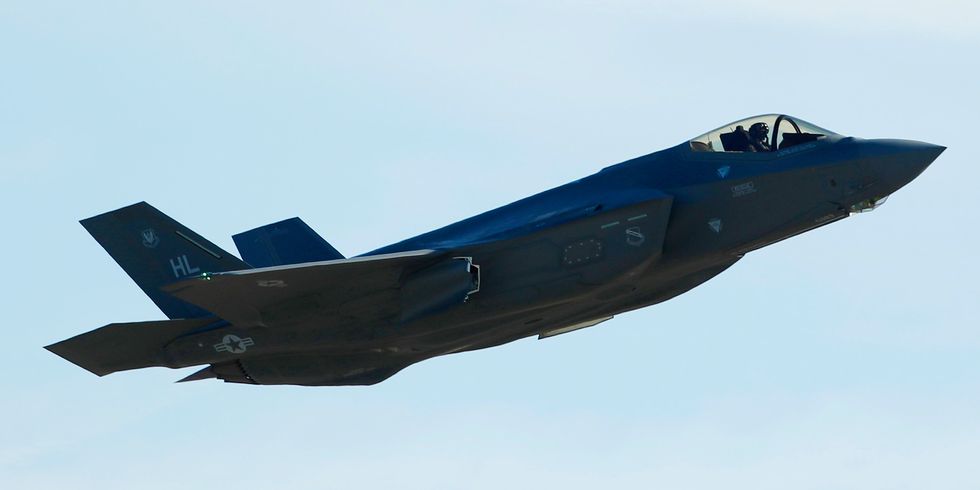When we last left our old friend, the F-35 fighter-bomber—a.k.a. The Flying Swiss Army Knife—they were working out the bugs in its ejector-seat mechanism so that the pilot would not be decapitated should said pilot have to exit the vehicle suddenly. There also has cropped up something of an oxygen problem which, if it were unchecked, at least would make the decapitation of the ejecting pilot superfluous. As Business Insider points out:
US Air Force officials cancelled F-35 flights on Friday at Luke Air Force Base after over a month of pilots reporting that the plane caused them to suffer from hypoxia-like symptoms from a lack of oxygen. Pilots flying the world's most expensive weapons system apparently found themselves running short of air, though the Air Force said in all cases, the plane's backup system engaged and no lives or planes were lost…Pilots of the Navy's F-35C reported that when taking off from aircraft carriers, the plane sometimes bucked them hard enough to hit their head on the canopy. In some cases, severe, persistent pain resulted. (Ed. Note: I would imagine, yes.) Additionally, the F-35 has posed a risk to smaller pilots due to its ejection seat. In October 2015, Defense News reported that pilots under 136 pounds could have their neck snapped if they ejected from the F-35.
At this point, if you’re keeping score at home, the entire project ultimately will cost you and me your grandchildren and everybody else and their Uncle Fud $1.53 trillion (with a T), which is a projected overrun of $35 billion (with a B).
Nevertheless, the F-35 is now making a star turn on the world stage as part of whatever the hell this administration is doing in and around the Korean Peninsula. According to The Drive, Air Force F-35’s are going to Okinawa while a couple of them performed at an air show in South Korea a little while ago. You will not be surprised to learn, however, that, as Bloomberg tells us, there remain some glitches in the machine.
The time to repair a part has averaged 172 days -- “twice the program’s objective” -- the Government Accountability Office, Congress’s watchdog agency, found. The shortages are “degrading readiness” because the fighter jets “were unable to fly about 22 percent of the time” from January through August for lack of needed parts. The Pentagon has said soaring costs to develop and produce the F-35, the costliest U.S. weapons system, have been brought under control, with the price tag now projected at $406.5 billion. But the GAO report raises new doubts about the official estimate that maintaining and operating them will cost an additional $1.12 trillion over their 60-year lifetime. Already, the agency said in the draft obtained by Bloomberg News, the Defense Department “must stretch its resources to meet the needs of continued system development and production while at the same time sustain the more than 250 aircraft it has already fielded.”
I’m no expert here, but it seems to me that I read somewhere once that combat aircraft occasionally fly in combat, during which time, I am told, they get shot at, and, every now and again, they get damaged. As I said, I am no expert, but I think the whole “replacement parts” problem should have been handled before we started shipping this baby off to conflict zones around the world.
Upkeep of the F-35 fleet will become more challenging as the Pentagon prepares for what the manager of the program has called a “tsunami” of new production toward an eventual planned U.S. fleet of 2,456 planes plus more than 700 additional planes to be sold to allies. The F-35 program office and Lockheed have identified steps to increase parts availability “to prevent these challenges from worsening” as aircraft numbers increase, the GAO said, but Pentagon documentation indicates “the program’s ability to speed up this time line is uncertain.”
Because this is an area, given the history of this particular turkey, where you want as much uncertainty as possible.
The GAO also disclosed that the F-35B -- the Marine Corps version of the fighter that’s scheduled to begin ship deployments next year -- won’t have required maintenance and repair capabilities at sea and “will likely experience degraded readiness.” Ellen Lord, the Pentagon’s new undersecretary for acquisition, highlighted the underlying issue for new weapons systems this month in a speech to an Army audience. “My initial conclusion is we spend an incredible amount of time on the acquisition side” and “very, very little time on the sustainment side,” she said. “When you look over the life-cycle” cost “of most of our programs, it’s about 70 percent on the sustainment side. So we need to get that right.”
“The sustainment side” is nice. Truly, when it comes to robbing the public purse by euphemism, our Defense Department and its corporate auxiliaries remain unsurpassed. Esquire would like to stress that no pilots were injured in the making of this post.
Respond to this post on the Esquire Politics Facebook page.

Charles P Pierce is the author of four books, most recently Idiot America, and has been a working journalist since 1976. He lives near Boston and has three children.














